Why has India's Punjab fallen into the grip of drug abuse?
- Published
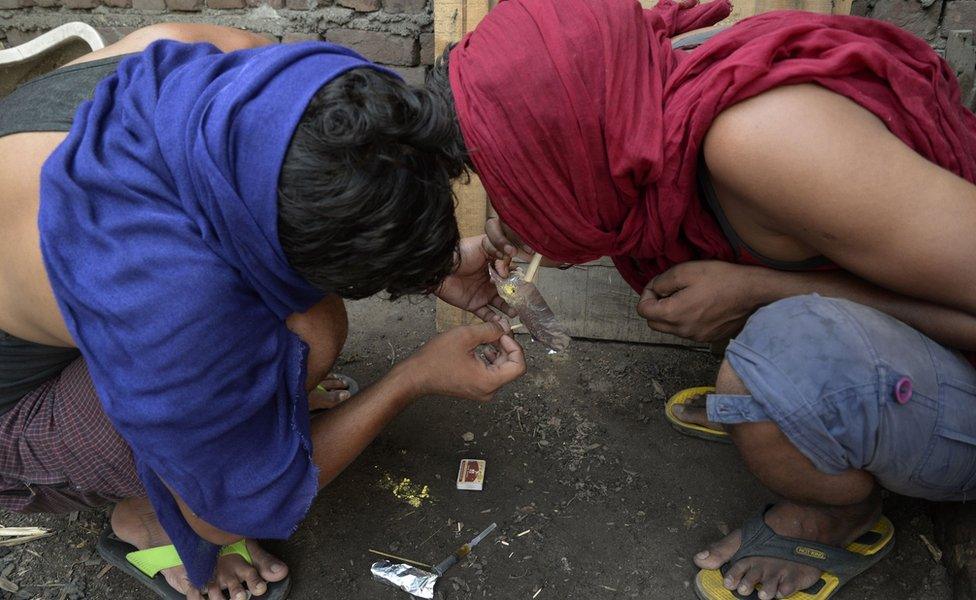
A recent study suggests more than 860,000 young men in the state take some form of drugs
The northern Indian state of Punjab votes on Saturday for a new government. But the biggest issue confronting voters is not jobs or corruption, but a drugs epidemic that is sweeping the state.
The BBC's Sanjoy Majumder travelled there to find out why one of India's most prosperous states is in danger of losing an entire generation to drug abuse.
"This is him when he was in his first grade. He had just won a school competition."
Mukhtiar Singh smiles wistfully as he shows me a faded picture of his son Manjit, from a family album.
"In my wildest dreams I could not imagine what was to happen to him."
India court overrules cuts to film
Straight Life: India's recovering drug addicts
Manjit, 28, died in June last year because of a drug overdose. His father, a worker in the government's power department, marched through the streets of his village carrying his son's body, and then addressed a letter to Prime Minister Narendra Modi.
The cost of Punjab's heroin epidemic
"I told the prime minister he needed to step in to save Punjab's youth from drugs. Our children are dying and nothing is being done."
Seven months later, Mr Singh is battling to highlight Punjab's alarming drugs problem.
A recent government study suggests that more than 860,000 young men in the state, between the ages of 15-35, take some form of drugs.
Heroin is the most preferred, used by 53% of all addicts. But opium and synthetic drugs such as crystal methamphetamine are also common.
"My mission is to save Punjab's youth," Mr Singh tells me as we sit on the roof of his modest two-room home. "I have carried my son's body on my shoulders. It's something I don't want any other parent to experience."
'Easily available'
It is astonishing how widespread the problem is. One estimate says that more than two-thirds of Punjab's households have at least one addict in the family.
Across the state, from villages in the lush green countryside to bustling towns and cities, young men huddle together in cemeteries, abandoned buildings or plain fields, smoking, snorting or shooting up.
Tarn Taran, a district located along the border with Pakistan is one of the worst affected.
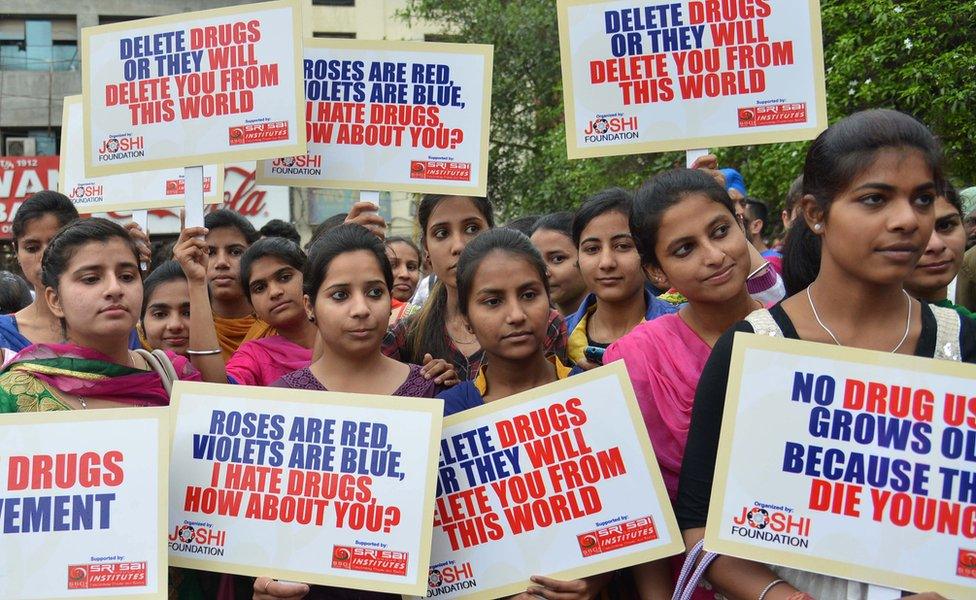
Campaigners have been demanding strict actions against drug smugglers
In the main town's civil hospital, which also serves as a centre to fight addiction, young men with glazed eyes hang around.
In the space of 20 minutes, I see a number of transactions unfold in full public view. They are approached by peddlers, money swiftly exchanges hands before a little packet is handed over.
The men then slink away behind a wall.
Beyond it is a derelict building, surrounded by rubbish and reeking of urine. Strewn all around are used syringes and broken bottles of prescription medicines.
"It's ridiculously easily available," Jasprit Singh tells me.
Jasprit, who is from Tarn Taran, used to be an addict, but says that he has been clean for the past four years.
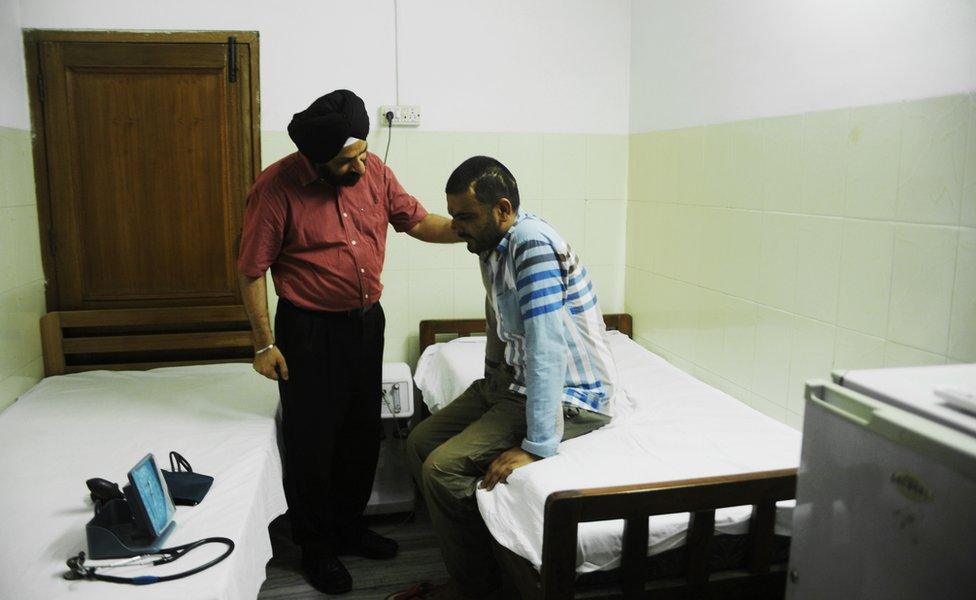
Hundreds of rehab centres have opened across Punjab
"Heroin, synthetic drugs - you name it, I've done it all. When I scored for the first time, I felt as if I was experiencing something wonderful," he says.
"I felt like something had been missing from my life until then."
He now works at the same rehab centre where he underwent his recovery programme, counselling drug addicts.
"I tell them that if I can give up drugs, anyone can."
The Hermitage rehab centre is housed in an impressive two-storey building set amid lush green lawns. Inmates, called students not patients, receive counselling, psychiatric and medical treatment here.
It's one of hundreds of rehab centres that have sprung up across the state in the past few years.
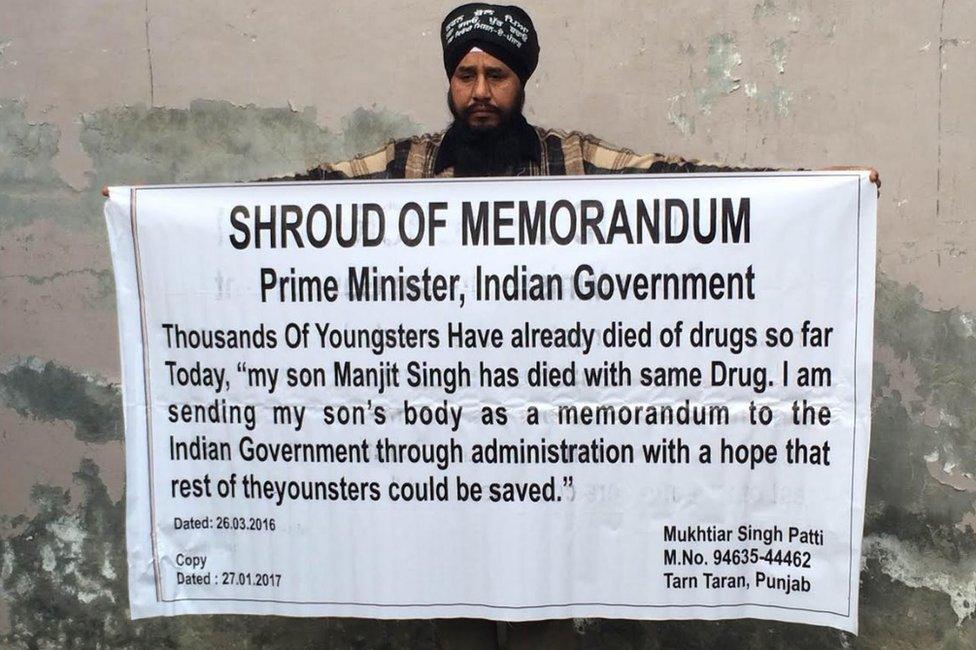
Mukhtiar Singh wants Mr Modi to form a policy against drug abuse
The inmates come from a variety of backgrounds. They include judges, police officials, pop musicians, students and quite a few women.
"The women are the most difficult to treat," the institute's director, JPS Bhatia, says.
"Many of them are abandoned by their families. Most have been sexually molested when they try and seek help, by unscrupulous counsellors and doctors, even the police."
Punjab's proximity to Afghanistan and Pakistan, with which it shares a border, has meant that it's a major transit route in the lucrative drug smuggling trade. That's one reason why heroin is so readily available.
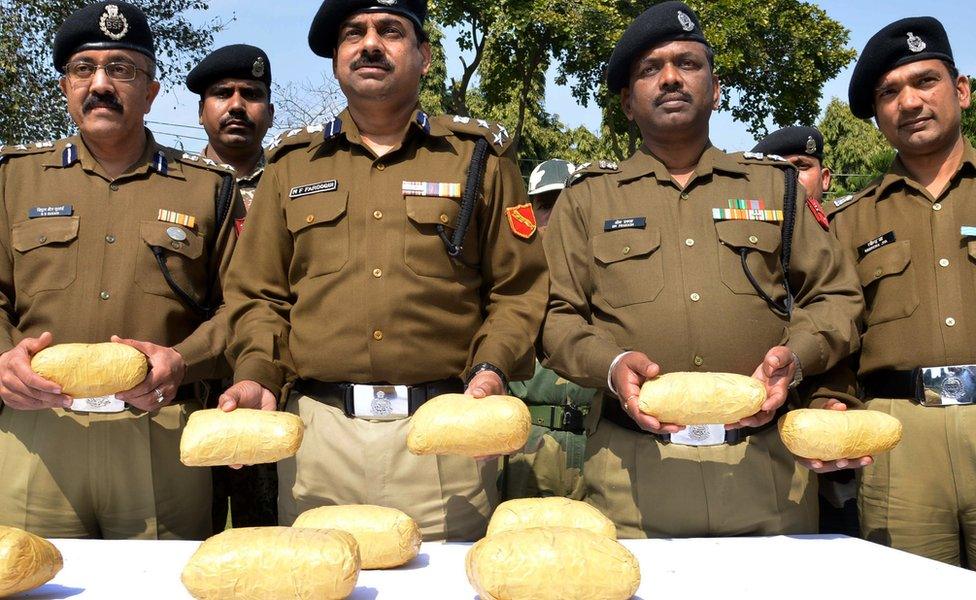
Border security officials routinely seize drugs near India's border with Pakistan
But why are its youth so susceptible? Drug consumption in Punjab is three times the national average.
Agriculture, which brought the state its wealth, is stagnating and with little industrialisation there is high unemployment.
And in the 1980s, Punjab was in the grip of a violent separatist militancy which has now ebbed but has left its scars.
"We got rid of terrorism only for it to be replaced with narcotics-terrorism," says Dr Bhatia.
"And we just have not been prepared to deal with it or even come to terms with the problems faced by our youth."